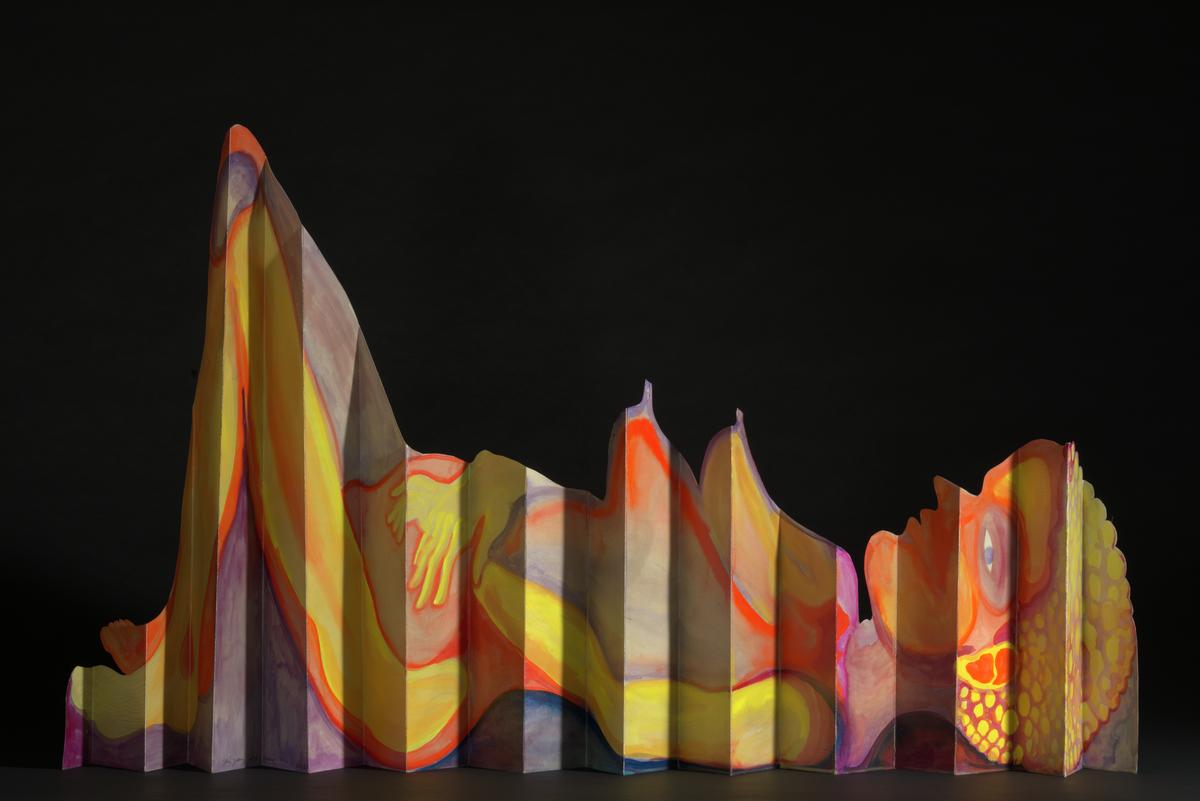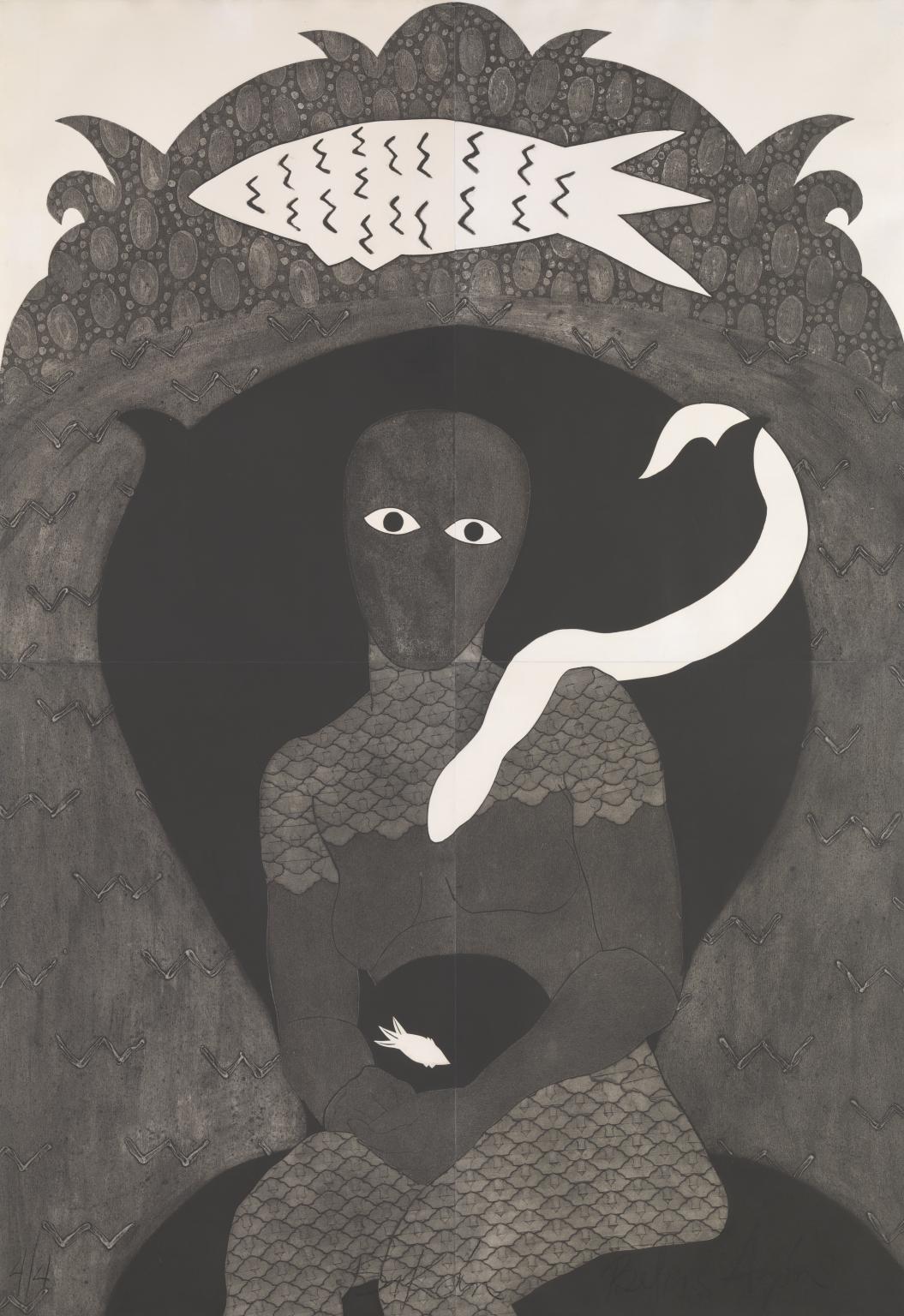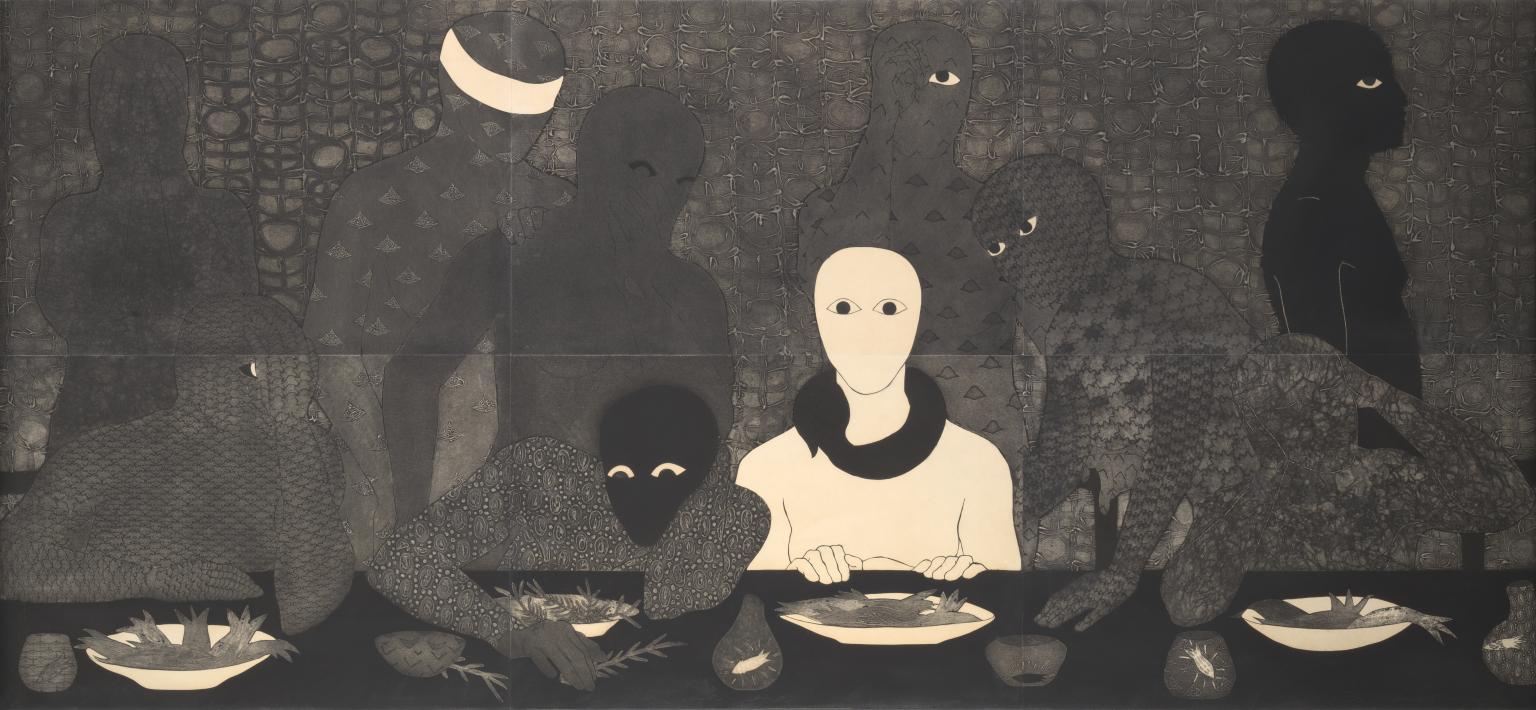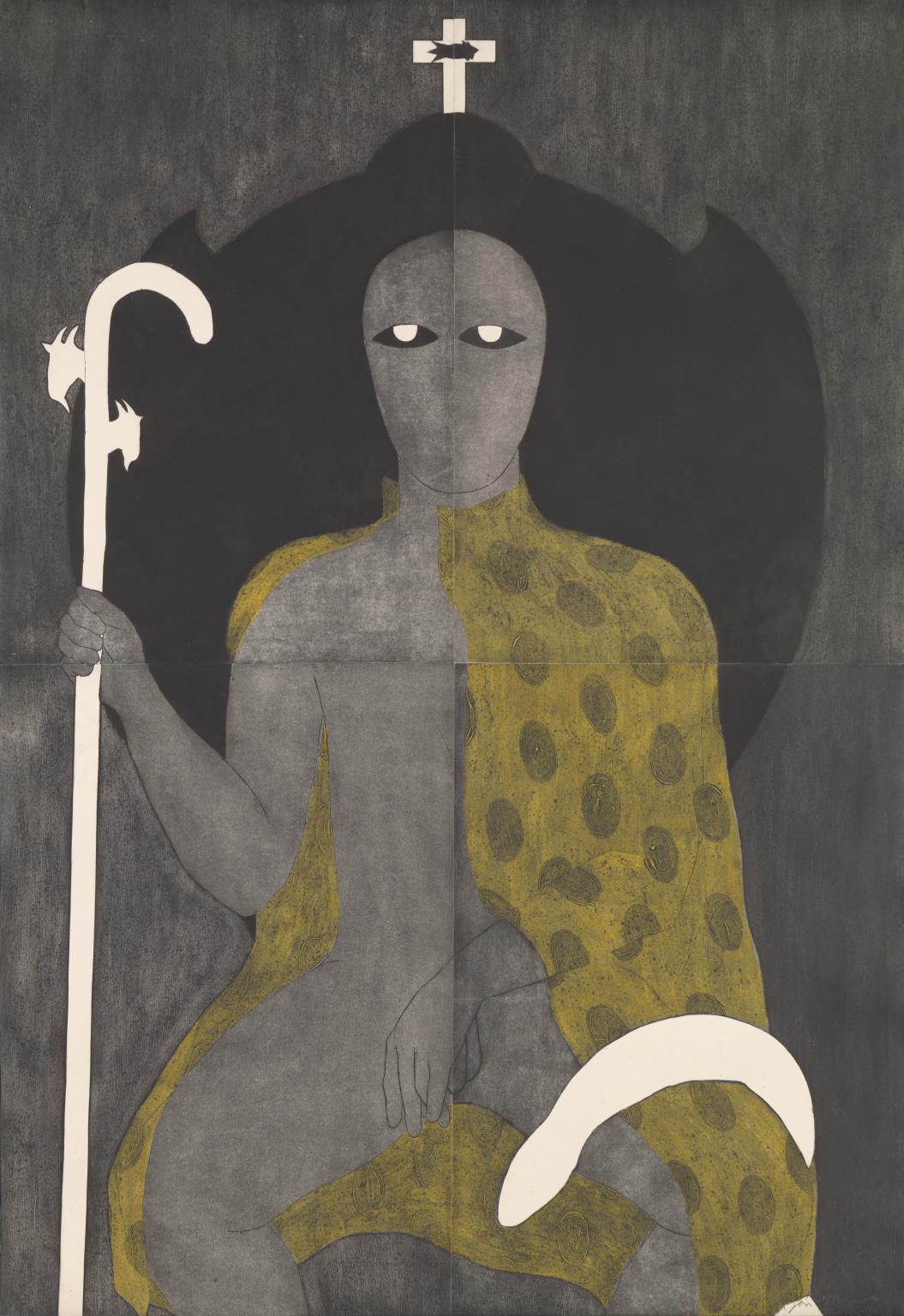11 rooms in In the Studio
These artists have used paper in unexpected ways to create prints and sculptures
The artworks of the two artists in this room draw upon specific indigenous belief systems to explore the position of women in society and in nature.
Belkis Ayón (1967–1999) was a Cuban printmaker who specialised in a printmaking process called collography. To create a printing plate, she glued various materials – ranging from sandpaper to vegetable peelings – to cardboard. Once inked, the plate was used to imprint the design onto paper.
Throughout her lifetime, Ayón created allegorical scenes based on Abakuá, a secret, Afro-Cuban brotherhood. Abakuá is part of a belief-system that enslaved people from southern Nigeria and Cameroon brought to Cuba during the transatlantic slave trade. It became one of Cuba’s main religious-cultural groups. Ayón particularly focuses on the only female character, Princess Sikán, connecting her with the struggles of women in the patriarchal society of Cuba: ‘Sikán’s image is paramount in all these works because, like myself, she led and leads a disquieting life, looking insistently for a way out.’
Sandra Vásquez de la Horra (born 1967) grew up during General Augusto Pinochet’s 17-year military regime in Chile, later relocating to Germany. Since 1997, she has developed her own form of sculptural drawing. She applies graphite and watercolour to folded paper before dipping it in beeswax, making the paper rigid.
Her sculptural drawing displayed here is a representation of the revered Inca goddess Pachamama, or Mother Earth, who presides over harvest and fertility. Vásquez de la Horra highlights similarities between the outline of the woman’s body and the mountainous landscape of the Andes. ‘We are one with the nature,’ she says.
Art in this room





